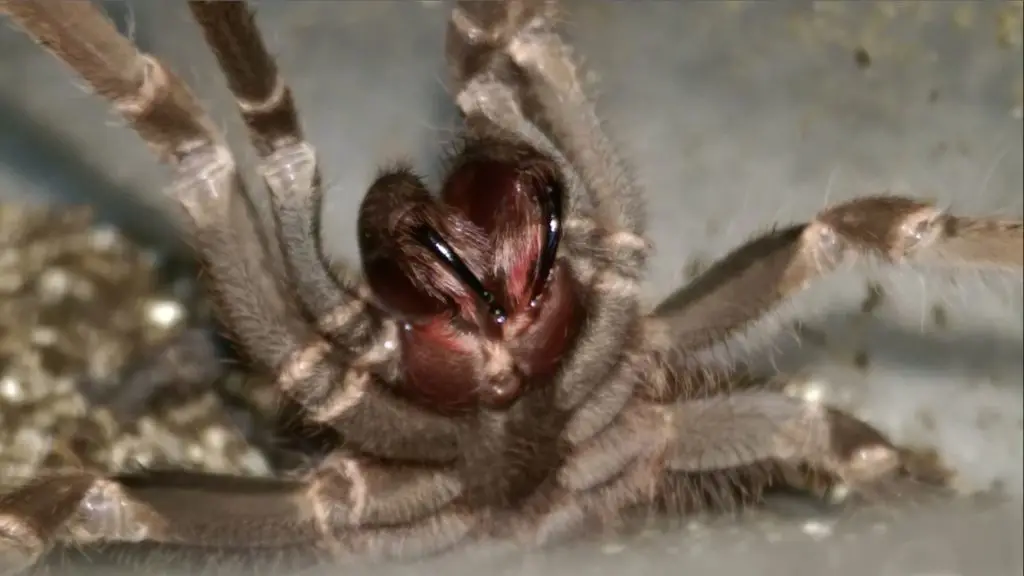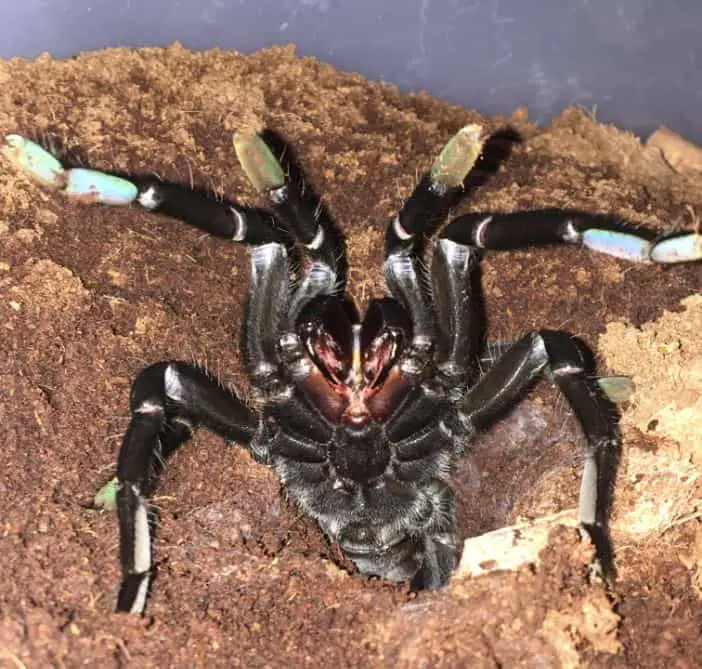To some people, tarantulas are nothing more than nightmare fuel, while to others they’re beloved pets. Whatever your opinion on the eight-legged crawlers is, knowing whether they’re poisonous or venomous is important information to know.
After all, tarantulas inhabit almost every continent in the world (except Antarctica) so you’ll never know when you end up eye-to-eye with one!

Poisonous vs Venomous: The difference explained
Before we can answer whether tarantulas are poisonous or venomous it’s a good idea to explain the difference between the two. People often get the two confused because they both have to do with toxins. The difference lies in the way these toxins are delivered.
As the Encyclopedia Britannica states: “According to biologists, the term venomous is applied to organisms that bite (or sting) to inject their toxins, whereas the term poisonous applies to organisms that unload toxins when you eat them. “
In other words, if you touch, lick, or eat something and it’s dangerous, that means it’s poisonous. If, on the other hand, getting stung or bitten is the dangerous part, it’s called venomous.
Are tarantulas poisonous?
Now that we’ve established the difference between poison and venom, let’s take a look at whether tarantulas are poisonous.
We now know that in order for a tarantula to be considered poisonous they’d have to deliver their toxins when we touch them or eat them.
Luckily, tarantulas are not poisonous because they’re not harmful to eat! There are several cultures in the world, such as in Cambodia, they’re actually considered a delicacy.
So, if for some reason you had eating a tarantula on your bucket list, you can do so safely without getting poisoned.
Are tarantulas venomous?
We’ve come to the conclusion that tarantulas are not poisonous, so what about venomous?
Tarantulas are indeed venomous. There are over 800 identified species and they’re all venomous to some extent. Some species have more potent venom than others, but there is no tarantula on earth that has to go completely without it.
Tarantulas deliver their toxins by piercing their prey with their hollow fangs and then injecting the venom through a hole in their fang. It kind of works the same as an injection needle.
These toxins do not only disable the prey but they also liquefy them to make them easier to eat.

Is tarantula venom dangerous for humans?
While every tarantula species has venom, the potency of it differs wildly between the species. Some species have very potent venom, while that of others is no more potent than a bee sting.
Generally speaking, Old World tarantulas have much more potent venom than New World species. It is generally accepted that the primary reason for this is that Old World spiders do not have urticating hairs, something that New World species do have.
Urticating hairs are hairs that the spider can “throw” in order to defend itself. They can be very irritating and if they end up in your eyes they can actually cause some serious damage.
To compensate for lacking this defense mechanism, the Old World spiders have developed stronger venom.
Luckily though, even the venom of Old World species is not strong enough to take down a healthy human and there has never been a recorded fatal tarantula bite.
Nevertheless, even though their bites are not fatal they can cause extreme pain and a host of other symptoms. If you’re interested, there are some very interesting bite reports on hobbyist forums.
However, some people do have allergies to the venom, which can make even the bite from a New World species have pretty bad consequences.
What are the most venomous tarantula species?
As previously stated, Old World species have the strongest venom. However, the potency of it does also differ between them.
Here is a list of the 10 most venomous tarantula species to avoid getting bitten by.
- Poecilotheria Metallica (Gooty Sapphire)
- Poecilotheria Regalis (Indian Ornamental)
- Poecilotheria Ornata (Fringed Ornamental)
- Heteroscodra Maculata (Ornamental Baboon)
- Stromatopelma Calceatum (Feather leg Baboon)
- Pelinobius Muticus (King Baboon)
- Cyriopagopus Lividus (Cobalt Blue)
- Pterinochilus Murinus (Orange Baboon)
- Harpactirella Lightfooti (Lesser Baboon)
- Hysterocrates Gigas (Giant Baboon)
Are tarantulas aggressive towards humans?

Tarantulas are typically not aggressive towards humans and do not really want to bite you. To understand why we have to take a dive into the mind of the tarantula.
You see, they are actually quite lazy arachnids that do not like to expend energy when not necessary. They create a burrow or other hideout and then spend a large part of their life in the same spot, only moving to ambush prey and eat (or mate when the time is ripe).
They might not be the smartest animals, but they do understand that humans are much too big for them to eat. As such, there is no reason for them to be aggressive towards humans. Biting them for no reason would simply be a waste of energy. If you treat them with respect, most species are actually quite friendly.
However, they can be defensive towards humans. If people mess with them they will typically try to run away but if that does not work they will bite to defend themselves. Similarly, when they get startled and see no other way out, they will resort to using their fangs to get them out of the situation.
Facts about tarantula venom
- According to studies, the venom of the King Baboon could be used for a new kind of painkiller
- Tarantula bites are so rare that the effects of their venom are not very well studied for most species
- The vast majority of species have very weak venom that’s less painful than a bee sting
- Spiders in the Poecilotheria genus are typically regarded as having the most potent venom
Final words
Tarantulas are not poisonous, but they are venomous. They have hollow fangs which contain venom glands. They use these hollow fangs like an injection needle to put the toxins into their prey in order to disable and liquefy them.
The potency of their venom depends on the species, with Old World species having much more potent venom than their New World counterparts.
Luckily, tarantulas do not see humans as prey and are not aggressive towards us. They can be defensive though, so if you handle them, you do risk getting a bite, but that comes with the territory.
- How Long Do American Eskimo Dogs Live? Important Factors and Care Tips - September 29, 2023
- Do American Bulldogs Need Grooming? Essential Tips and Care Guidelines - September 29, 2023
- Do Bengal Cats Enjoy Playing? Essential Tips for Keeping Them Active - September 29, 2023